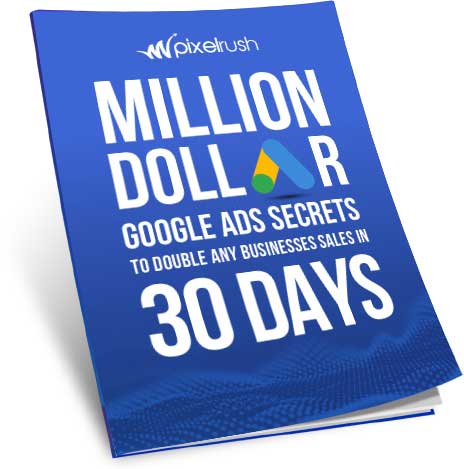For small businesses selling online isn’t as easy as you might think.
According to Forrester, consumers will spend US$327-billion per year on online shopping by 2016 in US. This is up 45% from $226 billion this year and 62% from $202 billion in 2011. When spending increases so does the level of your competition. The requirements for aspiring online business operators has gone up and if you want to compete you’ll need to be technical savvy, be prepared to learn and / or have the budget to hire experienced help to accommodate any knowledge gaps.
If your suffering from a lack of sales since you launched it typically means you’ve been focused on the design, and making things look good, while missing critical elements that attract visitors and lead visitors towards the sale.
Often you put your business at a disadvantage from the start by assigning entire budgets towards web design. It’s not the web designer that is at fault but that their skill set and experience focuses on functionality and look and feel more so than traffic and sales. They’re providing you with exactly what you’ve asked of them and it’s not an expectation that they’ll have the additional skills.
Unfortunately however generating online sales requires a combination of skill sets including design, SEO, conversion rate optimisation and numerous forms of online and offline marketing strategies. Before we can convert our visitors let’s first talk about the 5 stages of the buying life-cycle and and how important it is to focus on the things we can say and do that lead towards the sale.
The 5 Stages of the Buying life-cycle
Here is a quick overview of the buying life-cycle:
- Awareness / Problem Recognition: Your customer has identified a need for which they need a product or service to solve.
- Information Search / Consideration / Comparison: Your customer is searching, evaluating and comparing products and services that can provide a solution to their problem.
- Preference / Intent: Your customer has developed logical and an emotional reason towards purchasing one solution versus another.
- Conversion / Sale: A customer has purchased your product or solution.
- Retention / Review: A customer reviews their purchase which ideally leads to fulfilment, customer satisfaction and repeat purchases.
Build SEO In To Your Design
44% of online shoppers begin by using a search engine. – HubSpot
It’s well-known that search engines often deliver the highest rate of sales for online stores when compared to other online marketing mediums. SEO works because it’s often easier to understand the intent of a search and therefore decide whether a search has commercial value to your business.
Optimising your website structure, using content and URLs, is a little like filing documents in a filing cabinet. We’re trying to provide information silos and organised information so that it’s human friendly and SEO friendly. For example using content and structure we can target each area of the sales funnel:
- “lcd tv” – Broad and generic terms which may be used by customers in the Awareness and Consideration stages.
- These types of searches can be targeted with Category pages.
- “compare flat screen tvs” – The customer has identified potential models of interest and wants to compare which model is best for them in the Consideration and Comparison stages.
- These type of searches can be targeted with content marketing using reviews and comparison articles
- “Sony KDL32W700C 32″ – The customer is very specific search indicating much deeper level of interest which may indicate price or spec evaluating in Preference and Intent Stage
- These type of searches can be targeted with Product Pages
The above is not set it stone it’s merely an example of how you can use built-in SEO and ongoing content to attract customers at a variety of levels in the buying life-cycle.
Skill set required: Search engine optimisation
Build Trust With Your Visitors
Trust is earned not given – Unknown
The online game has changed how we can interact with potential customers. With online business trust is not a given it’s something you’ll need to earn. We don’t have the ability to approach customers in the way a staff member would in a retail store.
Consider a telemarketer calling you and asking for donations, investment or even worse….your credit card. It’s highly unlikely that you’ll just give your credit card details to a random caller because you don’t trust strangers, right? However as you walk through the call and gain trust in what they say then barriers may reduce if the quality of the sales is strong enough.
It’s similar for our visitors, although we’re not cold calling them, we need to reduce customer barriers by increasing their trust and becoming their preference or ideal choice of purchase. We can do this using the following:
- Design – Does your website look good?
- Who – Is it clear who we are and what we do?
- Navigation – Can customers find what they’re looking for quickly?
- Knowledge – What does it do? How does it do it? Why is it better?
- Experience – Is the business more experienced? Do they have qualifications.
- Secure – Is the website safe to buy from?
- Policies – Can I return something or get my money back?
- Reviews – Are their legitimate reviews and testimonials?
- Preference – Do they provide me something that others don’t?
- Contact – Are they easy to contact? Do they provide direct contact details?
- Price – Are the priced accordingly? Do they provide more value for money?
This phase is less about SEO and more about the design and copywriting however together each will contribute significantly to the overall success of your SEO. For example addressing all of the points listed above will provide valuable content to customers while also providing comprehensive information and giving Google a reason to take notice.
Skill set required: Copywriting, Web Design, Content Marketing, SEO
Remind Your Visitors Who You Are
“Content marketing is not about converting the 1st click, only foolish humans think it works like this – Rand Fishkin
How often have you wanted to buy something, known the exact product you wanted to purchase but you simply didn’t have the money to afford it at the time? You need to know that your visitors aren’t any different to you and that the 1st visit to your website is only your first opportunity to present yourself.
More often than not visitors might also forget you after their first visit. Not because they want to but because it’s human nature and our short-term memory is exactly that. In many cases visitors may be more likely to remember the product, the type of experience or that they loved something you offered but not the brand name itself.
It’s important to stay front of mind and to offer ways of capturing visitors that arrive at your site, for example:
- Opt in or lead magnet – You might provide an incentive to join your mailing list for discounts or to stay connected with future content.
- Newsletter – You might provide a sign up to our newsletter option
- Social links – You might provide links to your social accounts and encourage connecting or come up with clever ways to receive followers through your website.
- Content – Content doesn’t guarantee visitors will see you brand again however if your content is strong enough you’ll have the opportunity to attract them again and again.
If you’re looking for more advanced methods you can also consider remarketing through paid platforms like AdWords and Facebook advertising. In particular with Facebook you can remarket to your visitors with advertising, specials or future content that they may find of interest. The advantage now is that as soon as they’ve visited your site your brand will begin popping up on other websites. Not only will it will help to remind you but you’ll continue to improve trust and awareness of your brand.
Skill set: Conversion rate optimisation, Web Design, Paid Advertising Expert.
Can one person do it all?
Although we’ve highlighted the different specialisations that are required for each of the 5 stages you might be wondering whether someone can do it all? The answer is yes. Obviously you have the first option of becoming skilled in all of these areas in a DIY approach but remember that will take considerable time and effort.
Although rare, it’s also possible for an agency to provide all of the skill sets required to build a successful online business. At PixelRush we specialise in building profitable online business. We can do that because we have a team of experts for building conversion focused websites. We have the key skill sets at hand to ensure that you’re receive the highest quality website from day one for customers looking to launch with confidence.


